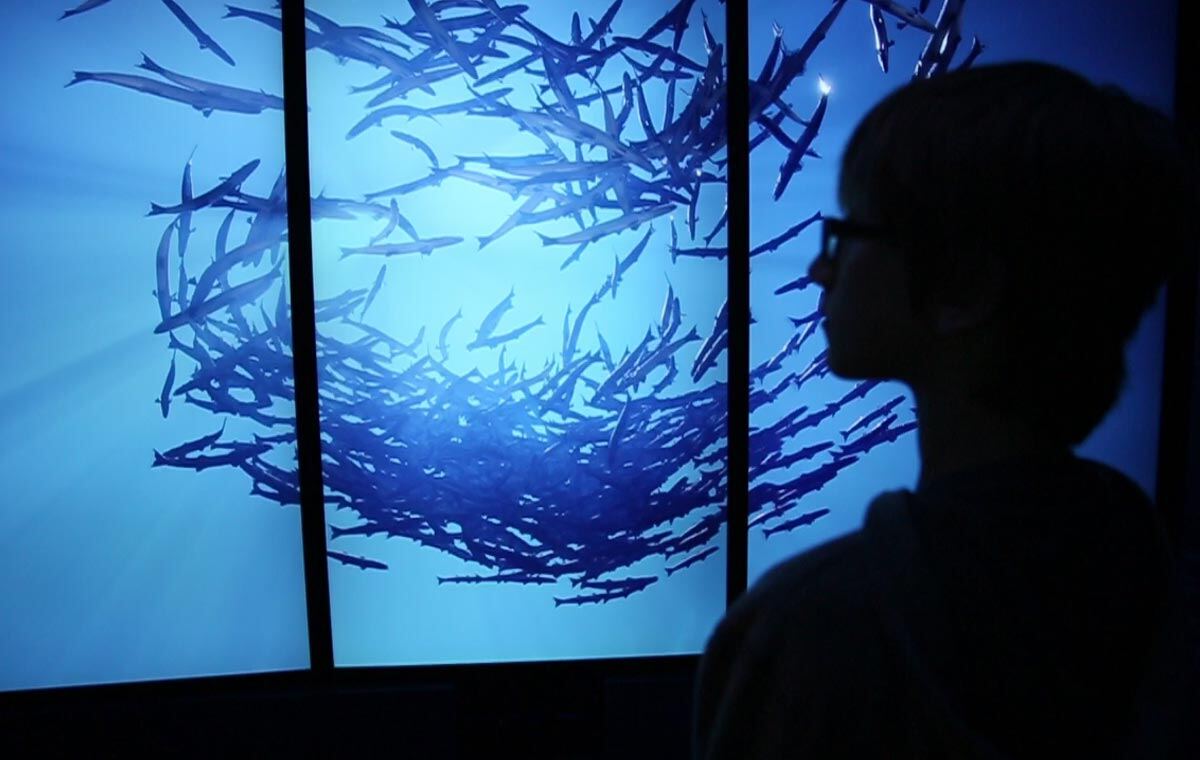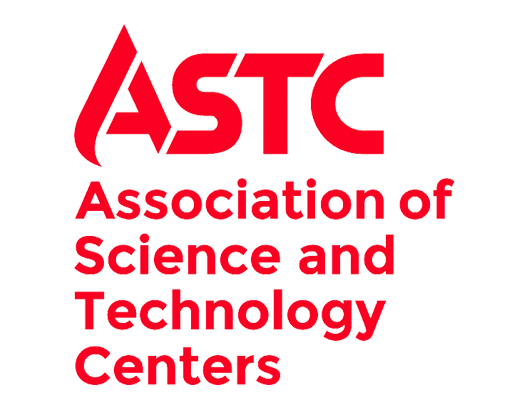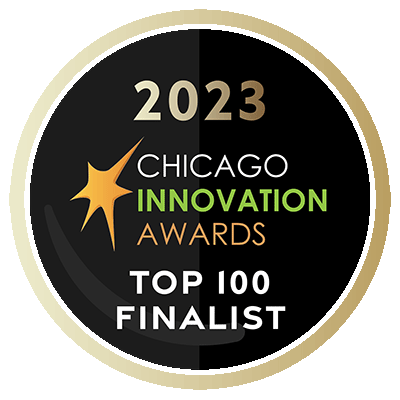Remember when adding a QR code to a brand activation was revolutionary? Or when interactive walls and AR filters were cutting-edge? It all feels like ancient history now. Walk through our studio today and you'll find us testing a whole new world of experiential technology powered by AI.
For those of us passionate about media and technology, this convergence of creativity and innovation is the ultimate playground. We’re not just adding flair to brand activations though. AI is reshaping how we envision, design, and bring them to life – and it should change the way you think about your next experience too.
In this guide, we'll cut through the hype and examine the real possibilities AI brings to experiential marketing. You'll learn the distinction between “AI-enhanced” and “AI-first” experiences, discover ways to maximize your technology budget, and understand key considerations throughout the entire process. We'll also fuel your inspiration with brilliant examples of experiential AI done right.
Whether you're just starting to explore tech-driven experiences or racing to stay ahead of the curve, you'll leave with a clear vision for creating next-level brand activations using AI.

How is AI Used in Brand Activations?
Technology has become ubiquitous in experiential marketing. From guest-facing interactives to behind-the-scenes content management systems, modern experiences run on tech. So, how does AI fit into it all? Is it replacing existing capabilities? Or simply improving them? Well, the answer is both. Let’s look at two distinct approaches to using AI in brand activations: AI-enhanced and AI-first.
1. AI-Enhanced Experiences
Tech-driven activations don’t always feature brand-new technology in the starring role. In fact, many of the techniques we use today, like projection mapping and motion tracking, have been around for years – but they’re now being supercharged by artificial intelligence. These AI-enhanced experiences are light years faster and smarter than their predecessors, improving real-time responsiveness, automating complex processes, and enabling richer interactivity.
Projection Mapping
Consider projection mapping, a technique for turning walls, buildings, and other objects into surfaces for video projection. It has long been a staple of experiential design, but AI now automates complex calibration processes and enables visuals to adapt in real-time based on environmental factors. This also eliminates hours of manual technical setup, allowing creative teams to focus on pushing boundaries and developing more dynamic, responsive experiences.
For example, AI-enabled projection mapping could analyze audience demographics in real time at a worldwide event like the Olympics, and adjust visuals to reflect local culture or sponsor branding, creating deeply resonant moments at a global scale.

AI Projection Mapping was the centerpiece of Let’s Glow SF 2024, a Winter Solstice event highlighted by a mirage of real dancers interacting with architecture, lights, and shadows towering into the skyline.
Motion-Tracking Games
Motion-tracking technology has enabled participants to engage with interactive experiences for years, but AI transforms these engagements into hyper-personalized adventures. By analyzing real-time data, AI adapts gameplay dynamically based on each participant's movements, preferences, and performance.
For instance, an AI-driven game might adjust difficulty levels on the fly, tailor visual effects to match a player's pace, or introduce context-specific challenges that keep the experience fresh and engaging. These innovations go beyond basic motion detection, turning gamified interactions into truly dynamic, adaptive, and unforgettable moments that increase dwell time, boost brand loyalty, and drive word-of-mouth.

Adaptive Lighting & Sound
Lighting and sound systems have traditionally relied on pre-programmed sequences, but AI introduces the ability to adapt in real-time based on audience behavior. For example, AI can detect shifts in crowd energy or movement patterns and adjust lighting intensity or soundscapes to match the mood. This creates a dynamic ambiance that feels alive and responsive, making every moment of the experience feel unique and immersive.

During a live performance at Google I/O, The Flaming Lips and their fans create a one-of-a-kind song with Google’s “Fruit Genie” – an AI-powered musical instrument.
2. AI-First Experiences
Some of the most exciting opportunities in experiential marketing happen when AI becomes the foundation of the experience itself. Unlike AI-enhanced experiences that build on existing technologies, AI-first activations are only made possible through advances in generative AI, such as large language models (LLMs) and other transformative innovations. These technologies enable entirely new types of interactions, from real-time conversational holograms to deeply personalized, AI-generated content. Here are a few standout examples:
Conversational Holographic Avatars
Imagine a guest engaging in a real-time, multilingual conversation with a holographic brand ambassador — perhaps the company’s CEO, a celebrity spokesperson, or even a fictional character. AI powers these interactions with natural language processing, making them fluid and authentic. These holograms don’t just grab attention; they create unforgettable moments that forge lasting connections with audiences.

At CES 2025, Proto Hologram collaborated with AARP to showcase groundbreaking, multilingual holographic technology that can transform quality of life and combat loneliness for seniors.
Generative AI Personalization Stations
With generative AI, brand activations can offer personalized takeaways that resonate on an individual level. For example, guests might input preferences or details about themselves and walk away with custom-created artwork, products, or digital mementos. In a retail activation, generative AI kiosks could create bespoke product designs, offering personalized items that customers can’t get anywhere else. These unique, tailored experiences turn participants into enthusiastic advocates who can’t wait to share their creations with others.

Travel brand Away hosted an activation that transported guests to an AI-generated world, with personalized dreamscape images created for visitors based on a travel questionnaire. (photo: courtesy of Superfly)
AI-Powered Brand Ambassadors
Autonomous robots or virtual avatars powered by AI put a futuristic spin on one-to-one interactions. These brand ambassadors can greet, guide, or entertain guests while maintaining a responsive and engaging presence. Unlike traditional staffing, these AI-driven personalities are consistent, scalable, and capable of delivering excitement and connection on a whole new level.

Aura, the AI-powered spokesbot for The Sphere in Las Vegas, combines life-like expressions, real-time learning, and conversational intelligence to elevate guest interactions.
When it comes to using AI in brand activations, these inspiring examples just scratch the surface. The possibilities are limitless, but the challenge lies in understanding the role AI should play in an immersive experience. The decision to develop an AI-enhanced or AI-first experience should never be the first consideration. The most successful brand activations start with clearly defined goals and a strategy for achieving them – while technology serves as a purposeful tool to support the mission.
Key Considerations When Using AI in Brand Experiences
AI offers incredible potential for creating transformative brand experiences, but it also comes with important decisions that will contribute to the success or failure of an activation. By addressing these factors thoughtfully, brands can ensure their AI-powered activations are both impactful and responsible.
Technical Infrastructure
AI-powered experiences often require significant processing power, and the scale of an activation can directly impact the infrastructure needs. For smaller activations, renting cloud-based compute power can be the most cost-effective option, but for larger, ongoing projects, investing in dedicated hardware might be more economical. For example, a single-day activation using AI-driven holograms might rent server capacity, while a permanent installation in a flagship retail store could justify purchasing its own compute infrastructure.
Data Privacy
Personalization is one of AI’s greatest strengths, but it comes with the responsibility of protecting visitor privacy. Activations must include thoughtful data collection and processing systems that comply with regulations like GDPR or CCPA. For instance, collecting anonymous behavioral data for real-time adjustments can provide valuable insights without compromising individual privacy. Transparency with audiences about how their data is used builds trust and reinforces the brand’s commitment to ethical practices.
Human Oversight
While AI excels at automation and adaptation, it’s not infallible. Mistakes, biases, or unexpected behaviors can occur, particularly in complex activations. Human oversight ensures that AI operates as intended and aligns with the brand’s objectives. For example, if an AI-powered avatar encounters an ambiguous query, human monitoring can step in to provide accurate responses and maintain a seamless guest experience. This balance of automation and oversight ensures the activation meets high-quality standards while avoiding missteps that could undermine the brand.
By addressing each of these considerations during the planning phase, you can maximize the potential of AI for brand activations while mitigating the risks. The result: a seamless, streamlined, and stress-free experience.
Choosing an AI Partner for Experiential Marketing
AI isn’t just transforming what audiences experience during a brand activation — it’s reshaping how those experiences are conceived, designed, and executed. Success begins with identifying a technology partner who understands how to harness AI to elevate every stage of the project. The right partner isn’t just focused on the audience-facing "wow factor" but also leverages AI to reduce costs, optimize workflows, and create scalable experiences.
AI at Every Stage of the Project Lifecycle
Strategy & Design: Generative AI is revolutionizing concepting and pre-visualization, enabling teams to explore more daring creative directions. With tools that quickly transform 2D ideas into immersive 3D environments, designers can push boundaries while aligning closely with client expectations.
Operational Efficiency: AI streamlines workflows and optimizes production planning, ensuring resources are used efficiently. By automating repetitive tasks and providing data-driven insights, AI allows more of the budget to be allocated to the final experience, rather than managing the process.
Production & Fabrication: AI-driven tools enhance precision in fabrication and reduce material waste, resulting in higher-quality installations with fewer roadblocks. This means faster timelines, cost savings, and seamless execution for even the most ambitious activations.
Future-Proofing: AI-powered activations typically rely less on on-site hardware and more on adaptable, cloud-based systems. This allows for updates and maintenance to be handled remotely, reducing long-term costs and making the activation easier to sustain over time. Future-proofing through AI ensures the experience stays fresh and relevant without operational headaches.
When choosing a partner, look for one who sees AI not as a gimmick but as a tool for better decision-making and more impactful results. A true technology partner understands how to integrate AI strategically, ensuring that every aspect of the process—from design to delivery—is elevated to its fullest potential.
AI and the Future of Brand Activations
AI is transforming experiential marketing, opening the door to a new era of brand activations that are more immersive, personalized, and impactful than ever before. The possibilities range from enhancing familiar technologies to creating groundbreaking, AI-first interactions that redefine the way audiences connect with brands. However, the key to success lies not in the technology itself but in how it’s used.
The most effective brand activations start with a clear strategy, defined goals, and a focus on delivering meaningful audience engagement. AI then becomes the catalyst, amplifying these efforts and elevating the entire experience. By addressing considerations like infrastructure, data privacy, and human oversight, brands can ensure their activations are not only innovative but also responsible and future-proofed.
Ultimately, the right technology partner can make all the difference. A partner who understands the full potential of AI—and how to apply it strategically at every stage of a project—will help you truly unlock the possibilities.
Ready to learn how AI can transform your next brand activation? Book a no-obligation strategy session with Bridgewater Studio today to explore the future of immersive experiences.


.png)
.png)
.png)







